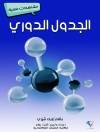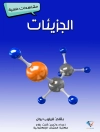This unique book describes the latest information in the fundamental understanding of the biophysics and biochemistry of articular cartilage using the state-of-the-art practices in NMR and MRI. This is the first book of its kind, written by physicists and chemists on this important tissue, whose degradation contributes to osteoarthritis and related joint diseases. Connecting the fundamental science with the clinical imaging applications, the experts Editors provide an authoritative addition to the literature.
Ideal for practising physical scientists and radiologists with an interest in the fundamental science as well as instrument manufacturers and clinical researchers working with articular cartilage.
Inhaltsverzeichnis
Part One – Introduction: Introduction to Cartilage;
Osmotic Properties of Cartilage;
Introduction to NMR and MRI;
The Magic Angle Effect in NMR and MRI of Cartilage;
Part Two – Physical Properties of Cartilage by Relaxation Anisotropy;
Experimental NMR and MRI Techniques for Cartilage Research: Physical Properties of Cartilage by Relaxation Anisotropy;
Chemical Properties of Cartilage Studied Using Charged Ions;
Quantification of Articular Cartilage Microstructure by the Analysis of the Diffusion Tensor;
Sodium and Other Exotic Methods in NMR and MRI of Cartilage;
Multi-Quantum Filtered NMR and MRI of Cartilage;
Solid-State NMR Techniques to Study the Molecular Dynamics in Cartilage;
Ultrashort Echo Time Imaging of Articular Cartilage;
Low-Field and Field-Cycling NMR and MRI of Cartilage;
The Influence of Specimen and Experimental Conditions on NMR and MRI of Cartilage;
Part Three – Biomechanical Properties of Cartilage by NMR and MRI;
Diffusion MRI and Poroelastic Biomechanics of Articular Cartilage;
Combining Multi-Modal MRI and Biomechanical Modeling to Investigate the Response of Cartilage and Chondrocytes to Mechanical Stimuli;
Loading-Induced Changes in Cartilage Studied by NMR and MRI;
Part Four– Applications and the Future of Cartilage Research by NMR and MRI;
The Critical Role of the Imaging Resolution in MRI of Cartilage – The MRI Microscope;
Multi-Component Relaxations in MRI of Cartilage;
Uni- and Multi-Parametric Magnetic Resonance Analysis of Cartilage;
Magnetic Resonance in the Assessment of Tissue Engineered Cartilage;
Complementary Imaging in MRI of Cartilage;
Quantitative MRI for Detection of Cartilage Damage;
Challenges for the Early Detection of Degenerative;
Cartilage Changes Using Magnetic Resonance Imaging In vivo in Humans;
Ultrahigh-Field Whole-Body MRI for Cartilage Imaging: Technical Challenges












